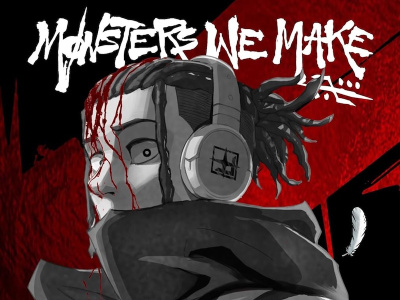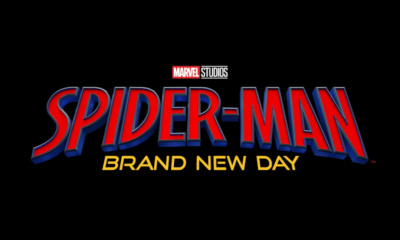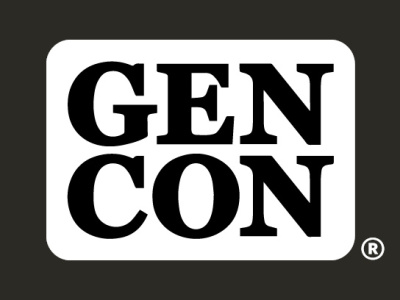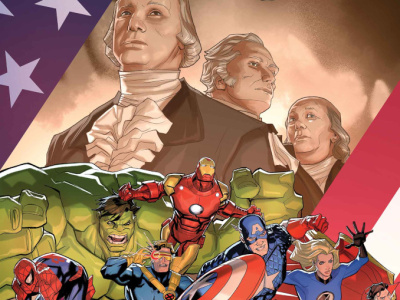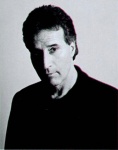
We recently spent some time with Barry Levine, President and Publisher of Radical Publishing. Radical recently launched its first two comic series and gave a look at more of its properties on Free Comic Book Day.
Levine spent about three years working with Dark Horse, where he helped develop Rex Mundi (see “Johnny Depp To Do Rex Mundi”) and other projects. He co-founded Radical Publishing with Jesse Berger, David Elliott and Matthew Berger.
In Part 2 of this two part interview, we talk about Radical’s relationship with Imaginary Friends, the Radical brand, and the movie pipeline. In Part 1, we talked about plans for Radical’s publishing roll-out and its plans for the manga and anime businesses.
Help us understand the relationship between Radical and Imaginary Friends Studios.
Well, I met them for the first time last year at Comic-Con when we were debuting our stuff and they came over. They had read an interview I did, and they came over to the booth and they wanted to show us their portfolio. I was blown away not only by the quality but the consistency if their work and asked them what their history was. They came from the advertising world, the design world, one of the owners was the director at MTV Asia, and they formed their own studio. There’s one in
They’d had offers from a couple of major comic book companies. One offered to buy into them, but they didn’t like the quality of what they wanted them to do. They were not given any input whatsoever, some of them wouldn’t be able to talk to the writers. And of course they’re a business, but they’re also true artists.
I looked at their stuff and said, “We were just going to hire different people, but I’m going to take my shot with these guys and let them do our first five books (obviously we brought in John Bolton, and Stjepan Sejic, and Bill Sienkiewicz, and Clayton Crain to do covers and posters). My biggest apprehension was you see some of the comic book companies and they go to studios in
You talked about the Radical universe or Radical brand. Is there a specific target audience you’re trying to reach? And what are the characteristics of the properties you develop that help you reach that audience?
I’m not going to do what IDW does. Ted Adams is a dear friend and I love what they do. I even have a project with them—Road to Hell. But when you think of IDW you think of horror or certain licensed properties—Transformers and so on.
We do original content, but we also reinvent iconic stuff, so the brand’s already there. That’s a very important part of what we do. It was chancy, but it’s not chancy if you believe in your direction and you believe in the way you’re going to market it. Everybody in the beginning told me I was crazy to do [Hercules]. It’s been around, public domain. So was 300, but take a look at what Frank Miller did and take a look at how Zack Snyder adapted it. Aladdin: everybody’s done Aladdin in one way or another, but our Aladdin is more like Lord of the Rings—you’ve never seen our artwork like this. Ian Edginton’s crafted a beautiful, dark story.
A lot of our books are kind of R-rated, and if you go somewhere else it’ll be kid stuff. The kid stuff is not going to be like that. And if it turns into a film, then you’re looking at a PG-13 film, for most of our stuff.
We’re not really looking to say, “Well we have a very specific consumer in mind.” We have a very specific story in mind in iconic titles and titles that fit our universe. We’re doing Assassins with Flint Dille (
We’re doing Oblivion, which is Joe Kosinski, and Ian Edginton again. Joe created the story (he directed Tron 2.0), and Oblivion is a space opera.
Caliber is the Arthurian legend retold in the American northwest as the Wild Bunch. Instead of Excalibur, you have a gun.
If we’re going to tell anything, we’re retelling some of these iconic stories in an edgy way.
What we’re not going to do right now is licensed material. I’ve turned down a couple of licensed pieces. That’s not what I want to do. Sure, you can make money doing that. You can help establish your brand doing that, but I believe that we can establish our brand by putting out great stories, great marketing, great artwork and put the money and the focus into our creators and our own brand. Maybe three years from now, we’ll think about doing a license piece, but not now. Not even concerned about that.
You had your coming out party at
I would say it will take no longer than 14-15 months because we’re involved with a company oversees that. The Hercules Universal piece, that’s Pete Berg; a writer’s being brought on in the next two weeks. That’ll be promoted in the trades in about three weeks.
We’re going to do a full page ad on the John Woo piece. We’re looking to go into production on that in fall of 2009. That is being co-financed by our company overseas and money out of
John Woo’s film, Red Cliff, which they spent $85 million on, was financed without any North American studios. So our business model is that there are certain things that we set up with studios to help brand us. (And it doesn’t hurt to have Pete Berg attached and producing as well, especially with Hancock coming out. I think that film will make about $10 billion—I think it will do about $200, $250 million in this country, I really believe that.)
The other part of our business model is that we co-finance with studios; we own a piece of the property. It helps us from a creative perspective. It helps us from a financial perspective. That has been our business model and we were lucky enough to find people that believe in our dream--believe in Jesse Berger, who’s my partner, and Dave Elliott, who’s a partner in our company, believe in our dream--and gave us the money and ability to go. You don’t fix what’s not broken and we haven’t broken anything yet. So far we’ve been attracting some major names to direct.
I’m not going to go into a studio and sell a comic book, and I see that happening with a lot of other people. They sell comic books and they go in with a writer and they pitch it—who cares? Sure, people will buy it, but I also know that if anyone is stupid enough to think that film is definitely going to made in a short amount of time, then I’ve got some sand in the
The best way to get a film made is to go in fully packaged. Bring in money, bring in a director of substance, or a new director everyone wants to be in business with, and a writer of substance, and sometimes with a piece of talent. Most of the time talent really doesn’t dictate anything unless it’s a small film. I’ve been out with a piece with an A-list talent and couldn’t sell the property (way in the past). Johnny Depp was different; Johnny really sold that film [Rex Mundi]. Thank God we have Jim Uhls, who wrote Fight Club, who wrote Jumper, an excellent writer. We’re going to work with Jim as well on Hollow Earth. And that’s one of the few times where an actor really jumpstarted the film.
That’s going to be the difference with our business model. I’m not looking just to sell stuff to a studio. We’re involved, not only use, but other co-financiers that are meeting with us at
What has the best chance to be out first?
I would say Caliber because John [Woo] doesn’t really have anything after Red Cliff. He has a small film he’s going to make in
We’re very much about creating real mythologies, grounded characters, real characters, and Steve Moore is a complete maniac for that kind of stuff. When I first read his outline for the first issue of Hercules (it was a script for the first issue), it was 58 pages. You talk about research and being meticulous, it was nuts. I see why he works so closely with Alan Moore, why they’re friends. I think they’re writing a graphic novel together right now. And Sarah Aubrey, who runs Peter Berg’s company, his partner, studied Greek mythology in college, so when she and Pete read Steve’s entire five issue script for the comic books, they said, “that’s the film we want to make.” They had been offered so many of these kinds of stories. There was another Hercules out there as well, but they’ve been offered a lot of these and turned them all down. “We want that script. We want our screen writer to write that story.” It’s a very conflicted, very grounded character. It wasn’t about super strength, it was about redemption, about six other people who had the same problems, same anguish. He used weaponry instead of super strength because he really didn’t want to appease the gods by using that.
Same thing with Caliber. John Woo read the scripts initially he saw the portfolio, production renderings and thought this is something he really wanted to do. It was just a natural fit. He read Sam’s script and he said, “I want Sam to write the first draft. This is the story I want to tell.” So we’re pretty good in doing that.
We didn’t tell Ian Edginton, “We want you to write Aladdin because it has to be the movie you’re writing.” No, “It has to be whatever you want to write.” I always tell our writers, “Don’t be afraid.” Even screenwriters that come to us with ideas, they’re so conditioned to writing in a very specific format because, “I can’t write that piece—it’s too big of a set piece, that’ll never make it into the film without a $200 million budget.” I always tell people, “You write whatever you want because we can show whatever we want. It’s a graphic novel. Don’t curtail your imagination, that’s your strongest component. Don’t ever, ever do that.”



